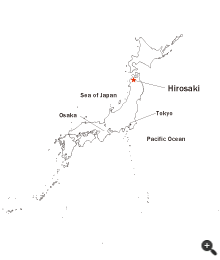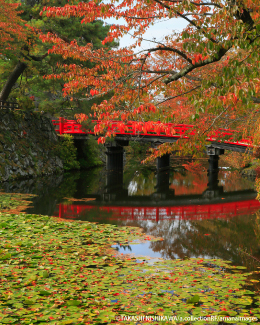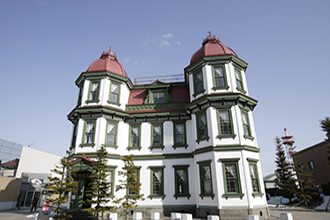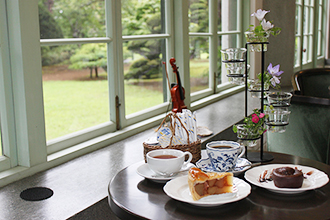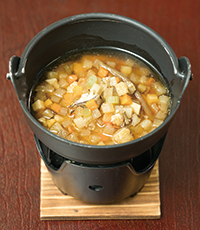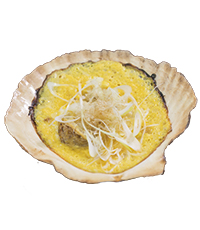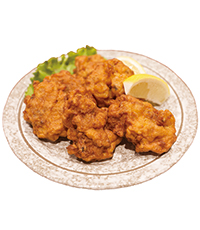niponica is a web magazine that introduces modernJapan to people all over the world.
2019 NO.25
 Strolling Japan
Strolling Japan
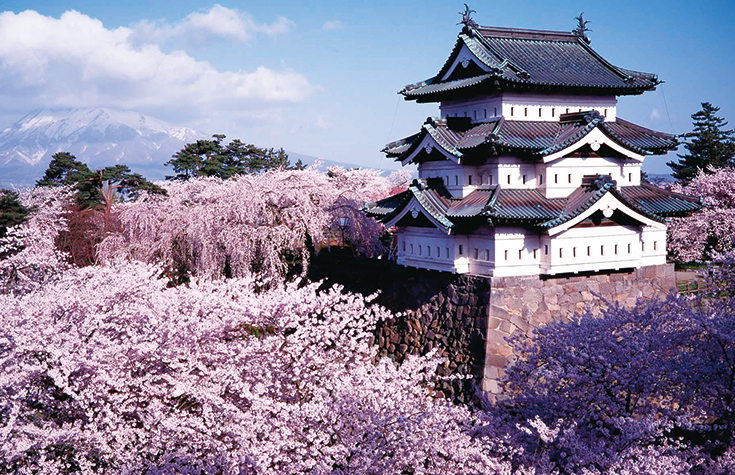
Hirosaki Castle's keep, the only surviving keep (watchtower built in the center of a castle) in the Tohoku region, located in northeast of Japan’s main island.
Hirosaki Park with Hirosaki Castle changes appearance beautifully with each season for example, the red and yellow leaves in autumn.
Mention of Hirosaki normally brings to mind a snowy, northern district, but there are many things to see at any time of year. In particular, Hirosaki Castle conveys the special beauty of each of the seasons.
Hirosaki Castle, built in the Edo period (17th century), is currently open to the public as Hirosaki Park. Some enduring castle structures, including the keep and the turret, have been designated as important national cultural assets of Japan, while the ruins have been designated as a national historic site. Bustling crowds can be seen here every year for the Hirosaki Cherry Blossom Festival, which features 2,600 cherry trees in full bloom, leading to it being selected as a famous place for cherry blossoms. In the autumn, the area is colored with red and yellow leaves and, in winter, you can see Hirosaki Castle illuminated and decked in snow.
Hirosaki promotes itself as a "town symbolized by a castle, cherry blossoms and apples." In some places, you can see scenery typical of an apple-growing locality. A cool drive through the orchards along the Apple Road opens up a vista that you are sure to enjoy, including the sight of Mount Iwaki in the distance. The mountain, with a road comprising as many as 69 bends, and the apple trees really work together to present a wonderful view that you will not see anywhere else. If you want to taste apples, visit the Iwakisan-kanko-ringo Orchards where you can pick and eat the fruit fresh from the tree.
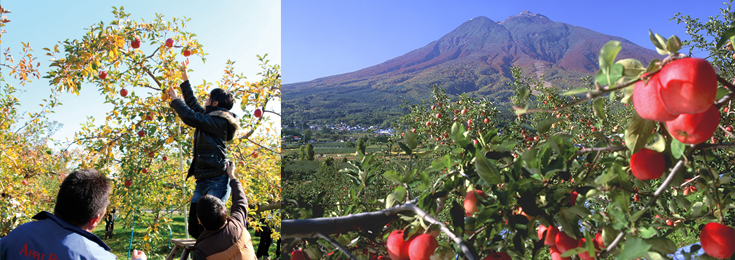
Apple orchards spread out at the foot of Mt. Iwaki which can be seen from Hirosaki Castle.
The former Hirosaki City Library. Until around 1931 it was used as the municipal library. Currently, it is used to display old folk documents, etc.
Besides Hirosaki Castle, the city also boasts a number of Shinto shrines, Buddhist temples, and old streets that tell of its traditional past, as well as western style architecture from the Meiji period through the Taisho period (late 17th century-early 20th century). It really is a treasure trove of cultural properties and buildings. Among them are places like the Western-style Villa in the Fujita Memorial Garden where you can enjoy a meal. The café in the building offers several kinds of apple pie, a specialty of Hirosaki, and a beautiful view of the garden.
Western-style Villa in Fujita Memorial Garden owned by Fujita Kenichi, a Hirosaki businessman. Here, in the Western Villa, surrounded by an Edo-style Japanese garden, you can sample and compare the various types of apple pie.
After a light tea, you might wish to experience some local cuisine from the Tsugaru region. Specialties include ke-no-shiru (soup made with kelp stock and vegetables) and kayaki-miso (shellfish and fermented soy beans cooked on a shell ). Each local specialty is imbued with the wisdom of northern regions – do not waste food collected in a short period of time to survive the long winter. The dishes taste mellow and warm up the body from its core. Igamenchi is a dish in which squid is flattened and minced, then rolled into patties with vegetables and fried. Once you start eating it, your appetite will be aroused.
Why not rediscover the beauty of Japan's four seasons in Hirosaki - a city where you can enjoy food and culture amid streets full of atmosphere.
Ke-no-shiru - a soup made with lots of vegetables, such as finely chopped carrots and white radishes, and flavored with miso or soy sauce.
Kayaki-miso (shellfish and fermented soy beans cooked on a shell ) is a local dish that, along with ke–no-shiru, is a time-honored favorite. The dish is made by placing the ingredients in a scallop shell, simmering in miso and finally, pouring over beaten egg.
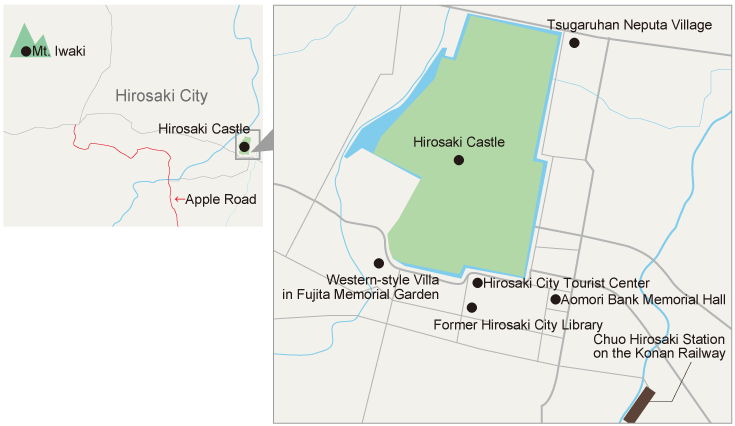
Map of Hirosaki Area
●Access
Approx. 75 minutes from Haneda Airport to Aomori Airport. From Aomori Airport to Hirosaki Station bus terminal takes about 55 minutes by bus.
●Contact information
Hirosaki City Tourist Information Office
Phone: +81-172-26-3600
Hirosaki Sightseeing Information Center
Phone: +81-172-37-5501
Tsugaruhan Neputa Village
Phone: +81-172-39-1511




